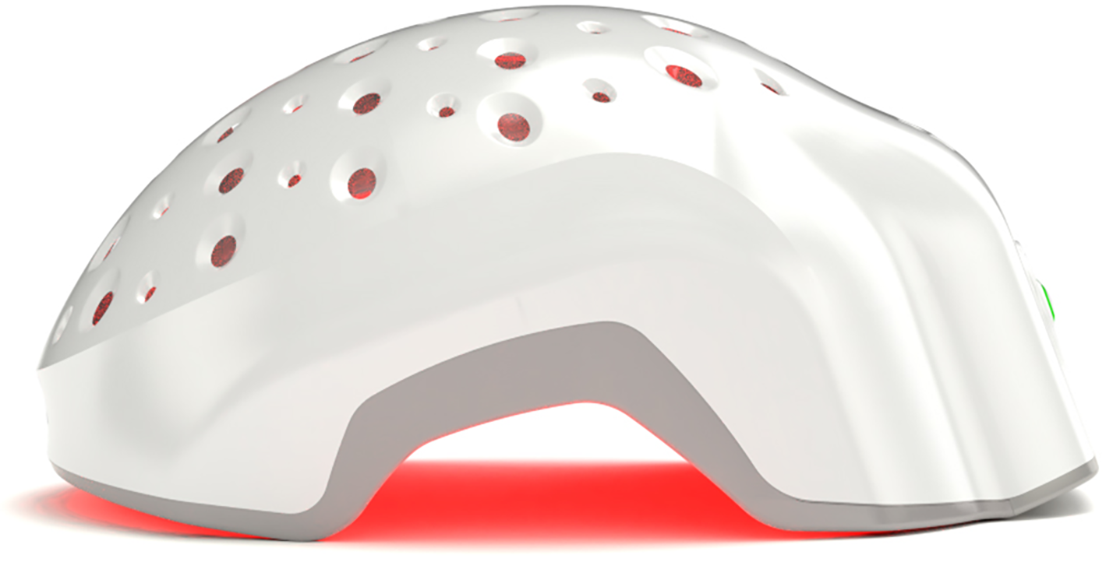The debate of hair transplant vs laser treatment in hair restoration is like choosing between a power tool and a fine brush—both get the job done but in very different ways. When faced with the prospect of reclaiming a fuller mane, you’re left thinking: do you opt for the precision and permanence of a hair transplant, or the gentle, non-invasive approach of laser therapy?
It’s a decision that balances not just results, but comfort, cost, and long-term commitment.
Now, it’s tempting to think of hair transplants as the heavyweights in this match-up—after all, they offer a surgical solution that can permanently restore hair to balding areas. But before you roll up your sleeves for a procedure, laser treatment steps into the ring, offering a subtler, less invasive option that still packs a punch, especially for those in the early stages of hair loss.
Let’s be clear, though: this isn’t about declaring an outright winner. Instead, it’s about understanding which contender best suits your unique situation.
In this blog, we’ll dissect the pros, cons, and everything in between so you can confidently choose the best path forward for your hair restoration goals.
The Basics of Hair Transplants
What is a Hair Transplant?
Hair transplants involve relocating hair follicles from a donor area—usually the back or sides of the scalp, where hair is more resistant to balding—to the thinning or balding regions. This method effectively redistributes your existing hair to create the appearance of a fuller head of hair.
Two primary techniques dominate the field: Follicular Unit Transplantation (FUT) and Follicular Unit Extraction (FUE). FUT involves removing a strip of scalp from the donor area and dissecting it into individual follicular units, while FUE meticulously extracts individual follicles directly from the scalp. Both methods have their merits, but your choice will largely depend on factors like your hair type, the extent of hair loss, and, let’s be honest, how much downtime you’re willing to endure.
How Well Does It Work?
The effectiveness of hair transplants is well-documented, with success rates often hitting the 90-95% mark for properly performed procedures. Transplants can indeed offer a long-term solution to hair loss, particularly for those battling androgenetic alopecia (genetic hair loss). However, while hair transplants are permanent, the results depend on the skill of the surgeon and the quality of the donor's hair.
According to a study published in the National Library of Medicine, the success of a hair transplant also hinges on maintaining the health of the transplanted follicles post-surgery. So yes, you could very well enjoy a lifetime of luscious locks, but it’s crucial to understand that this isn’t a one-and-done deal; ongoing care is necessary to keep those new strands thriving.
Recovery and Potential Risks
As with any surgical procedure, hair transplants come with their own set of risks and recovery protocols. Downtime can vary depending on the method used—FUT typically involves a longer recovery period due to the larger incision, while FUE offers a quicker return to normal activities.
Scarring is also a consideration: FUT leaves a linear scar that can be concealed with longer hair, whereas FUE’s tiny puncture scars are less visible but can still be a concern for those who prefer shorter hairstyles. Other potential side effects include infection, temporary hair shedding (known as “shock loss”), and uneven hair growth. While these risks are generally manageable, it’s important to weigh them against the potential benefits and consult with a qualified professional to determine if a hair transplant is right for you.
Also Read: Why Hair Transplants Might Fail?
Who Should Consider a Hair Transplant?
Hair transplants are typically considered a last resort, particularly for individuals who have exhausted other options, such as Laser Phototherapy (LPT), medications, or non-surgical treatments. It’s a game-changer for those with significant hair loss who are beyond the stage where LPT can offer benefits or who need a more aggressive, permanent solution.
This procedure is most beneficial for individuals with noticeable bald patches or a receding hairline as long as they have a robust supply of healthy donor hair available for transplantation. Hair transplants—both Follicular Unit Extraction (FUE) and Follicular Unit Transplantation (FUT)—are available to both men and women, although men more commonly undergo these procedures. For those in the early stages of hair thinning or with diffuse thinning across the scalp, LPT or other treatments may be more suitable as the first line of defense.
Understanding Laser Treatment for Hair Loss
What is Laser Phototherapy (LPT)?
Laser Phototherapy (LPT) has emerged as a non-invasive, scientifically-backed option for tackling hair loss, particularly for those dealing with androgenetic alopecia. Using low-level lasers, LPT works by stimulating hair follicles, promoting cellular activity that encourages hair growth. Unlike other more invasive methods, LPT is painless, requires no downtime, and can be done at home with FDA-cleared devices—making it the best alternative to hair transplant.
How Effective is Laser Treatment?
LPT shines brightest when it comes to early-stage hair loss. Numerous studies have shown that LPT can slow down the progression of androgenetic alopecia and even promote new hair growth with consistent use. For instance, research published in the Lasers Med Sci. found that participants using LPT devices experienced significant hair regrowth compared to a placebo group. However, it's crucial to manage expectations—LPT isn’t a magic bullet, but it’s a proven tool in the fight against thinning hair.
Safety and Side Effects
One of the most significant advantages of LPT is its minimal side effect profile. Users might experience mild scalp irritation, but these instances are rare and usually short-lived. More importantly, LPT carries no significant long-term risks, making it a safer alternative to other treatments like oral medications that can have more severe side effects. However, it’s essential to choose an LPT device with proper heat management features. Poor heat regulation can reduce the effectiveness of the treatment and, in some cases, lead to scalp irritation.
Who Should Consider Laser Treatment?
Laser therapy is particularly well-suited for individuals looking for a gradual, non-invasive improvement in hair density. It’s an excellent option for those in the early stages of hair loss, where the follicles are still responsive to stimulation. If you’re not ready to commit to a surgical procedure like a hair transplant, LPT offers a gentler alternative that you can incorporate into your routine without significant lifestyle changes.
Hair Transplant vs. Laser Treatment
When weighing the options between hair transplant and laser treatment, it’s essential to cut through the noise and look at what really matters.
Let’s break down the key factors: cost, recovery, long-term results, and the physical impact of each treatment.
1. Cost Analysis
Initial Expenses vs. Long-Term Investment
Hair transplants often come with a significant upfront cost, typically averaging around $5.44 per graft in the U.S., with some surgeries requiring up to 3,000 grafts. This can bring the total cost of a single procedure to approximately $15,000, depending on the extent of the hair loss. Additionally, the procedure can take up to 12 hours to complete, and some patients may require multiple operations to achieve the desired results.
While hair transplants offer a one-time investment for permanent results, the initial financial commitment can be daunting. On the other hand, laser treatments, like Laser Phototherapy (LPT), have a lower upfront cost but require ongoing sessions. Over time, these cumulative costs could rival the expense of a transplant, especially if long-term use is necessary. However, it's worth noting that many hair loss clinics and surgeons recommend combining LPT with hair transplant surgeries. Using LPT both before and after surgery can increase the chances of the grafts "taking hold" and thriving. Pre-surgery LPT can help ensure that the harvested hair is in the optimal growth phase, improving the health of the follicle for successful transplantation.
Is It Worth It?
Deciding between the two often comes down to whether you’re willing to invest upfront for potentially quicker, permanent results, or if you prefer the gradual, less invasive approach of laser treatment. Both methods require financial commitment, but your choice will depend on how you value immediate vs. ongoing expenses.
2. Recovery and Downtime
Weeks vs. No Downtime
Hair transplants, though effective, come with a recovery period that can last weeks. You might need to take time off work, deal with post-op care, and manage the inevitable scarring and swelling. In contrast, LPT is the no-downtime option—you can go about your day as usual right after treatment. For those with packed schedules, the convenience of LPT is hard to beat. However, it’s worth noting that the convenience comes at the cost of having to maintain a regular treatment schedule to see results.
Lifestyle Impact
If you lead a busy life or simply can’t afford the downtime associated with surgery, LPT is a clear winner. It allows you to continue with your daily routine without interruption, whereas a hair transplant might require you to plan around recovery time.
3. Long-Term Results and Maintenance
Permanent vs. Ongoing Commitment
Hair transplants offer a more permanent solution—once the hair follicles are relocated, they’re meant to stay. This can be appealing if you’re looking for a one-time fix. However, it's crucial to understand that hair transplants don’t always deliver flawless results. According to industry experts like Tamim Hamid, 50% of hair transplants fall out after 12 to 18 months, especially if patients don’t use an LPT device to support the grafts post-surgery. Multiple surgeries may be necessary to achieve the desired outcome.
Another key factor is the unpredictability of the hair growth cycle. Since each hair follicle may be in a different phase—growth (anagen), transitional (catagen), or resting (telogen)—around 30% of the transplanted grafts could be lost, as follicles in the dormant phase at the time of surgery might not survive.
In contrast, LPT requires ongoing sessions to maintain hair density. While it effectively stimulates growth and reduces shedding, it’s not a permanent solution. Stopping treatments can reverse your progress, making it a long-term commitment for those wanting to keep up their hair gains.
Commitment Level
The key difference here is commitment. Hair transplants demand a one-time commitment with potential for multiple follow-up procedures, while LPT requires a long-term commitment to regular treatments. If you’re in it for the long haul and can incorporate LPT into your routine, it’s a viable option. But if you’re looking for a more permanent solution, a hair transplant might be more appealing despite the initial hurdles.
4. Scarring and Physical Impact
Scars vs. No Physical Marks
One of the most significant drawbacks of hair transplants is the potential for scarring. Even with advanced techniques, some level of scarring is almost inevitable, which can be a concern for those who value a flawless scalp. LPT, on the other hand, is non-invasive and leaves no physical marks. For those who prefer a discreet treatment that doesn’t announce itself on their scalp, LPT is the safer bet.
Discreet Treatment
If you’re concerned about scarring or the visible aftermath of surgery, LPT’s non-invasive nature offers a significant advantage. You can undergo treatments without anyone knowing, which is particularly appealing to those who value discretion.
Checklist for Choosing the Right Treatment
Evaluating Your Hair Loss
Before making the decision of hair transplant vs laser treatment, start by taking a good, honest look at your hair loss. Is it just a bit of thinning around the temples, or are you noticing more scalp than you'd like in the mirror?
Understanding the severity of your hair loss is crucial. If you’re dealing with early-stage thinning, non-surgical hair restoration options like Laser Phototherapy (LPT) might be a perfect fit. On the other hand, if your hair loss has progressed to a point where comb-overs are becoming a necessity, a hair transplant could be more suitable.
Consulting with a healthcare professional is a smart move here. They can help you assess your situation more accurately, factoring in your hair loss pattern, genetics, and overall health. And let’s face it—sometimes we’re not the best judges of our own hair. A professional opinion can guide you toward the treatment that offers the best chance for success.
Lifestyle Considerations
When deciding between a hair transplant and laser therapy, your lifestyle plays a significant role. Let’s break it down: Are you ready to commit to a surgical procedure with a longer recovery time, or do you prefer the non-invasive route with minimal downtime?
A hair transplant may offer dramatic, long-lasting results, but it requires a recovery period and the willingness to undergo surgery. Additionally, the outcome depends on the skill and experience of your surgeon, with no guarantee that the transplanted follicles will survive beyond 12–18 months. This adds another layer of consideration when weighing the pros and cons of the procedure.
On the flip side, laser therapy is a non-invasive option that fits more seamlessly into a busy lifestyle, offering gradual improvement without significant downtime. However, patience is key—results take time and consistent use, which might test your resolve if you’re after quicker outcomes.
Conclusion
Hair transplants and laser phototherapy (LPT) each offer distinct approaches to addressing hair loss. Hair transplants provide a more permanent surgical solution, ideal for those with advanced hair loss and enough donor hair. Although effective, the procedure involves higher upfront costs, potential scarring, and a recovery period. On the other hand, LPT is a non-invasive method suited for early-stage hair loss, with a lower initial cost but requiring ongoing sessions for maintenance. While both options have their pros and cons, the decision ultimately depends on the severity of your hair loss, your comfort with surgical procedures, and your long-term commitment to hair care.
If you're looking for a laser hair growth device, try Theradome. It uses laser phototherapy to help stop hair loss and encourage new hair growth. The device delivers light at a specific wavelength of that reaches the hair follicles, making them stronger and helping hair grow back. It's easy to use at home, and many people see noticeable results after regular use.






















